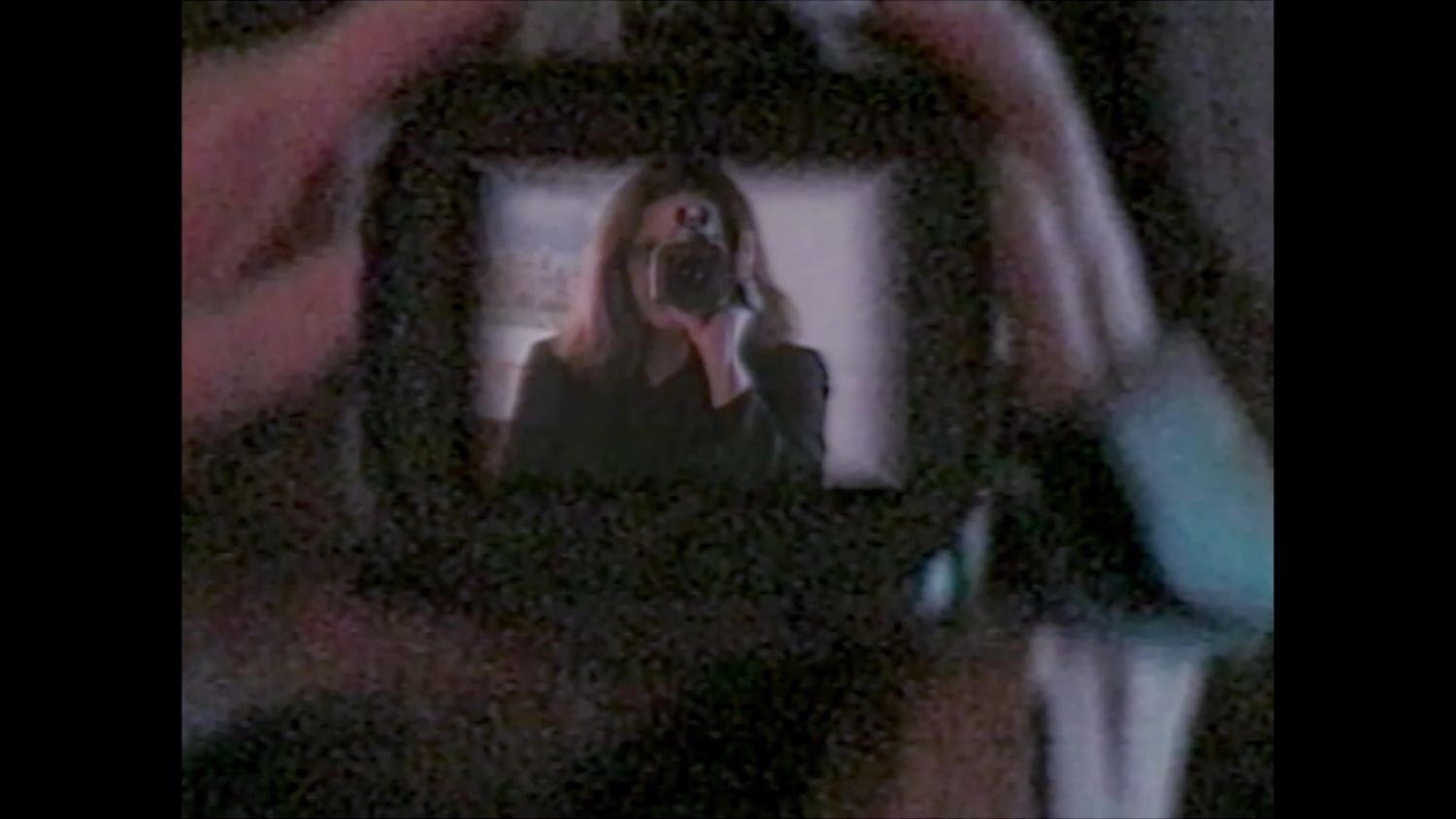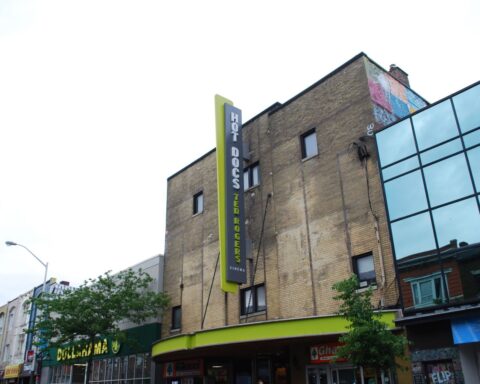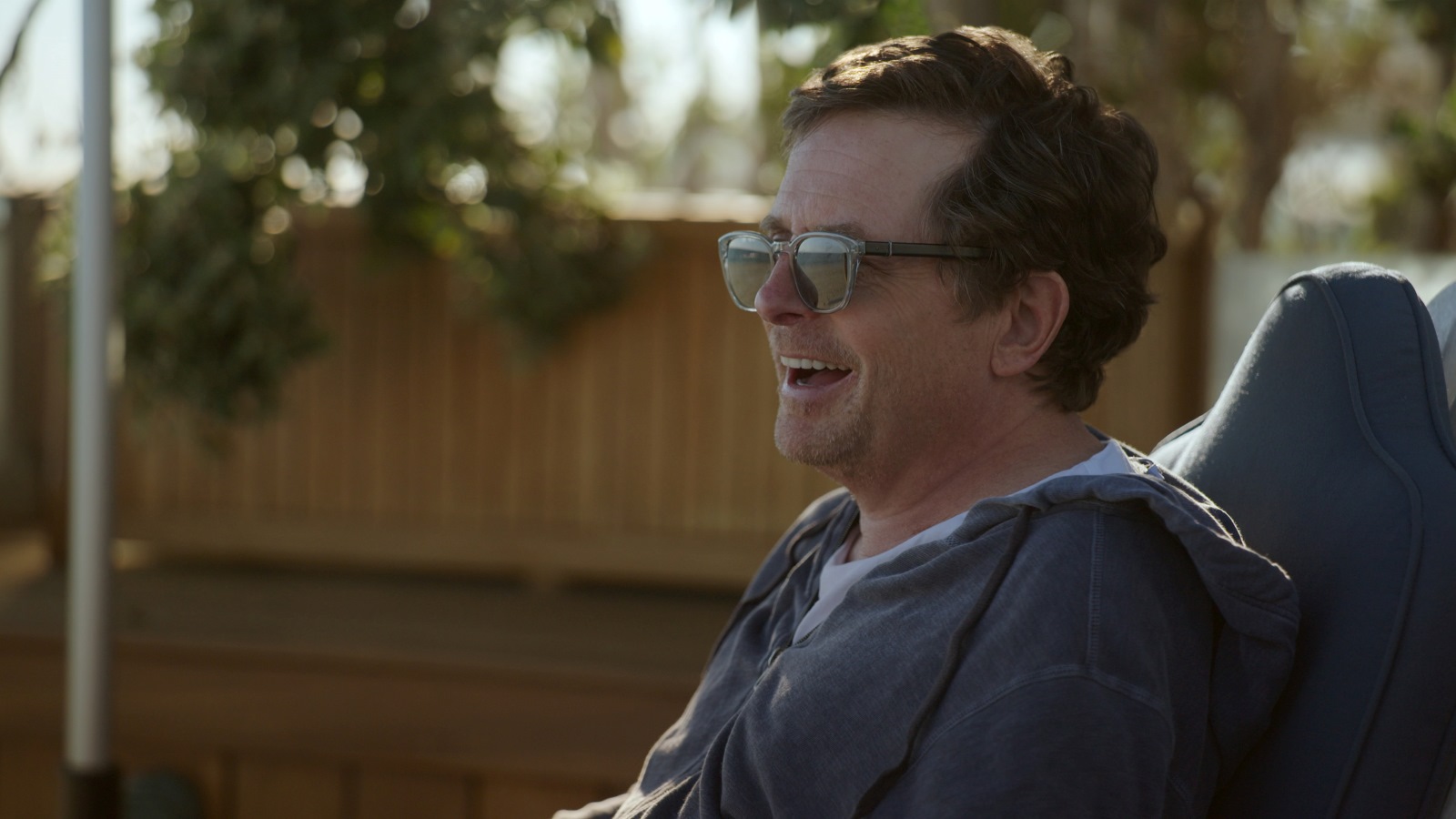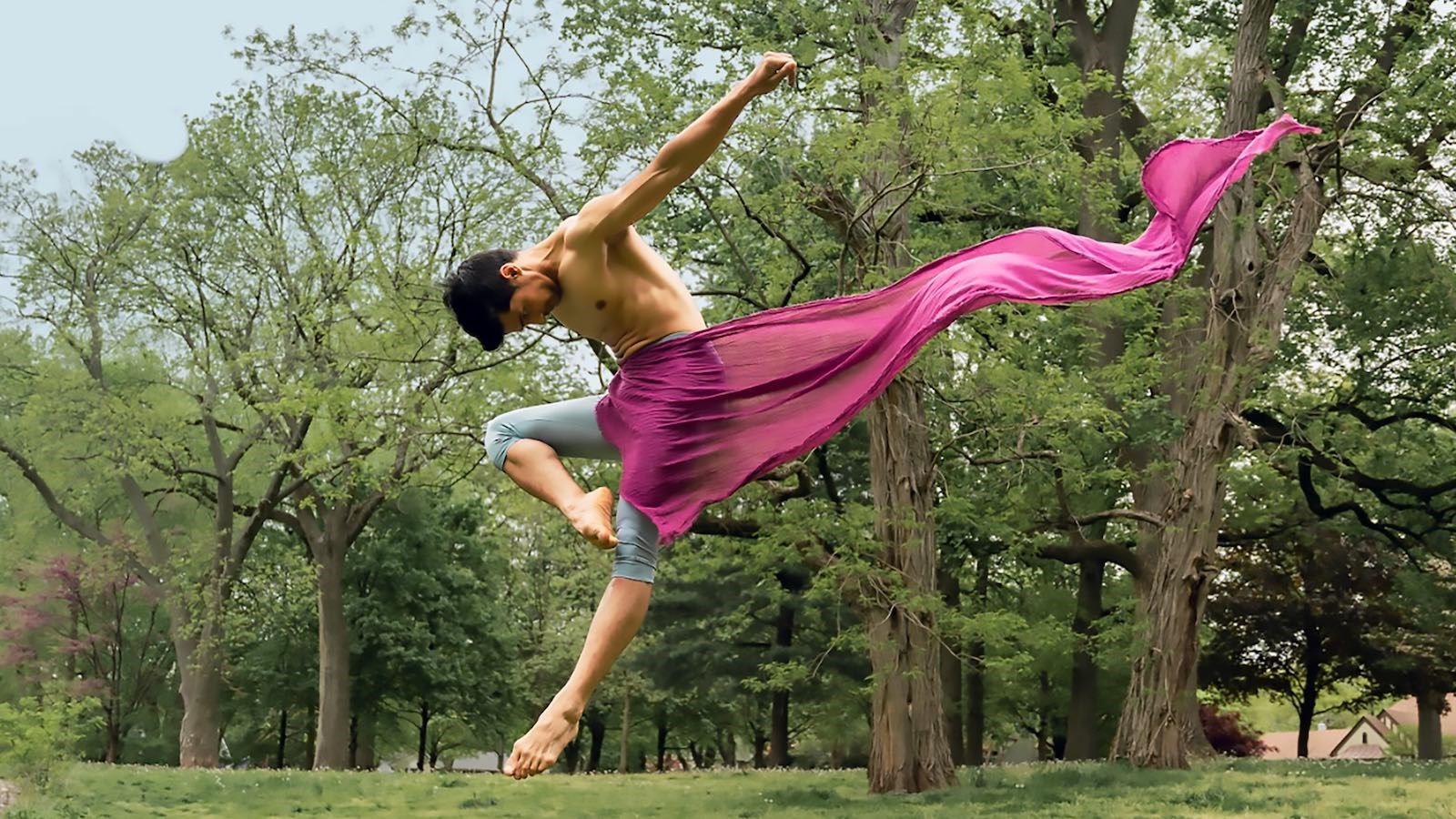In the era of Youtube and TikTok, the livestream and the vlog, the practice of recording oneself on video for public consumption has become so common as to seem almost socially obligatory, at least for those under 30. In 2019, when The Harris Poll surveyed 8–12-year-old children in the US asking them what they want to be when they grow up, the most popular answer was “YouTuber or vlogger.” The ubiquity of video technology—most human beings own a smartphone—and video-based social media platforms, along with a culture of self-disclosure and self-promotion, have made auto-videography one of the defining modes of expression of our time. While people have used image-making technology to document their own lives as long as such technology has been available—home movies, family photo albums, travel slideshows, selfies—the ease and immediacy with which one can capture oneself in a moving image and transmit it, in real time and to potentially everyone, represents a qualitative shift, the social, cultural, and psychological consequences of which are difficult to comprehend.
The basic technological means—a digital camera connected to a computer loaded with the right software and connected to the Internet— became available three decades ago. Although the webcam was first developed in 1991, it was popularized two years later in 1993 beginning with the release of Mosaic, the first web browser capable of displaying images with text on the same page, which provided the foundation of what browsing the web is like today. In the context of this 30-year anniversary, this essay will take a look back at the history of the webcam as a medium for experimental documentary practice.
The works discussed span the history of the medium, from Lynn Hershman Leeson’s proto-webcam confessional video works, to Jennifer Ringley’s early-web exhibitionism, to the more contemporary work of Petra Cortright, Natalie Bookchin, and Molly Soda. They engage creatively with the complexities of webcam as a medium for self-documentation: the collapsing of public and private space, the opening up of new ways of being with others while being alone, the tensions between self-expression and self-exploitation and between performance and authenticity.
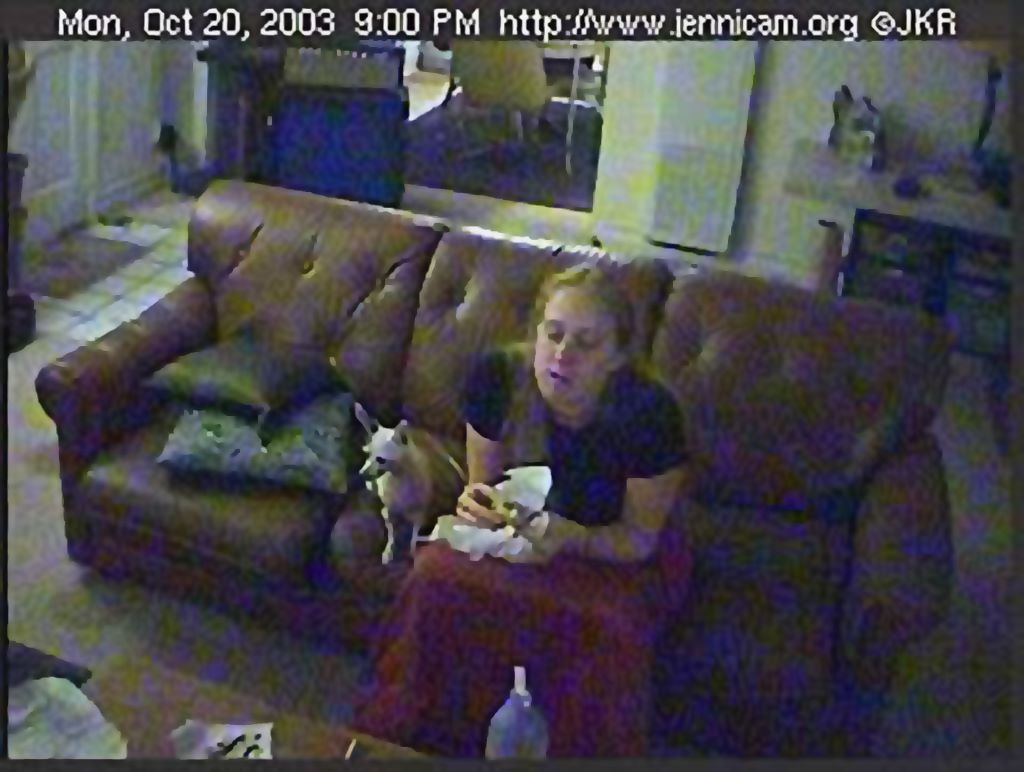
The history of webcam video as a medium for self-documentation begins with an infamous project titled JenniCam. In 1995, Jennifer Ringley, then an American college student, set up a webcam in her dorm room and began streaming her life 24/7, initially at a rate of one frame every three minutes. Contemporary streamers typically document elements of their daily lives, for example streaming themselves playing video or computer games with commentary. In contrast, “lifecasting,” as Ringley termed it, was a radical practice of broadcasting one’s private life in as unfiltered a manner as possible. JenniCam lasted until 2003; for eight years, Ringley put herself on view to an audience which sometimes included millions of viewers. In contrast to much of the pre-webcam tradition of durational performance by artists such as Chris Burden, Marina Abramović, and Tehching Hsieh, which often pushed performers to physical extremes, Ringley, who didn’t position herself as an artist, took a casual attitude to the project. “I don’t feel I’m giving up my privacy,” she stated in the FAQ page of her website. “Just because people can see me doesn’t mean it affects me—I’m still alone in my room, no matter what. And as long as what goes on inside my head is still private, I have all the space I need.”
Today, 20 years after JenniCam ended, it is often difficult to feel entirely alone in one’s room: Our private lives are constantly monitored, not (necessarily) through video, but through the unceasing tracking and transmission of our personal data whenever we use the Internet, which, for many people, is an activity that never truly stops. JenniCam is a record of a time in which the notion of private life and domestic space being revealed through the Internet was still surprising and novel, although increasingly less so as the performance continued into the early 2000s.
Writing about analogue film in 1972, Hollis Frampton argued that “what was once seen as a copious popular art is very rapidly becoming paradoxically fragile, rare and bounded in time.” Like analogue film, digital photography and video are also vulnerable to loss and decay, and arguably at a much more rapid pace. It is not uncommon for video works which were available online only 10 or 20 years ago to be inaccessible today. This creates a context in which most of the works that survive are those deemed worthy of archiving by an institution. American artist Petra Cortright’s 2007 online video performance vvebcam is only available online today due to the digital art not-for-profit organization Rhizome’s decision to restore it for their Net Art Anthology project; the work was also acquired by the Museum of Modern Art in 2021.
Webcam video usually depicts a speaker addressing the viewer, but in vvebcam Cortright resurrects the fourth wall. She faces the viewer, yet appears unaware of their presence, intently focused on the computer screen. Clip art-style graphics dance intermittently around her face; it is as if the viewer has entered into a liminal space somewhere between Cortright, the webcam, her computer, and the computer of the viewer. Cortright posted the video to her YouTube channel and copied popular tags from spam accounts to gain as many views as possible. While this resulted in a larger audience, many viewers left angry or confused comments, to which Cortright would respond in kind. vvebcam was a participatory performance, which ended when YouTube removed the video in 2010 due to the spam keywords. The version available to view on Rhizome resituates vvebcam within a reconstructed late 2000s-era YouTube, including comments and related videos—yet all of the dynamic, interactive possibilities of the original work are naturally gone. vvebcam is one in a series of video self-portraits from the late 2000s and 2010s in which Cortright makes use (and fun) of t he graphic affordances of the webcam. Looking back at these early videos in a 2020 text for Artforum, Cortright suggested that more than just self-portraiture, her webcam works were about “letting the customization effects” of the technology “overpower any sense of self.” In a pair of 2011 video works, titled snow1??? and snow2???, Cortright again films herself seated in front of the webcam, expression neutral; sometimes she looks the viewer in the eye, sometimes she looks away. Her figure is warped and obscured by shifting white dots that resemble digital snow. Although Cortright is in the foreground, her screen presence is literally overshadowed by the glitchy effects. In these videos, the webcam itself becomes the documentary subject: “In a way, the works weren’t about me at all, but about maintaining a sort of neutrality,” Cortright stated in Artforum. More than the subject of a portrait, Cortright appears as “a participatory actor” in collaboration with the webcam technology, as Giampaolo Bianconi suggests in a text for the gallery Société Berlin.
The recording apparatus of the webcam also figures as a documentary subject in the work of New York-based media artist Natalie Bookchin, who takes up the task of preserving a tiny fraction of the enormous selection of webcam video available on YouTube. In her short film Mass Ornament (2009), Bookchin combines hundreds of YouTube clips of individual dancers, alone in their rooms, and synchronizes them into a collective chorus-line performance set to music from two contrasting mid-’30s films: Leni Riefenstahl’s infamous Nazi propaganda film Triumph of the Will and Busby Berkeley’s musical Gold Diggers of 1935, evoking both the mass psychology of fascism and its choreography of power and an American populist culture of consumption and mass entertainment. Interviewed by Wendy Hui Kyong Chun, Bookchin describes the way in which the dancers depicted “push against walls and slide down doorways, as if attempting to break out of or beyond, the constraints of the rooms in which they seem to be encased.” Mass Ornament blurs the boundaries between private and public spaces and selves and between the collective and the individual, “reveal[ing] private actions as forms of repetition,” as Chun suggests. Yet the collectivity on display here is complicated by moments in which the dancers are not entirely in sync, and also by Bookchin’s addition of ambient sounds which highlight the disparate locations of the dancers she has brought together. These edits create a sort of hyper-real collective portrait of individual commonalities and differences, visualized through repetition.
Like Mass Ornament, Molly Soda’s INBOX FULL (2012) turns individual narratives into a documentary view of a collective, in this case making use of the social network Tumblr rather than YouTube. At the time INBOX FULL was made, Soda had a large following on Tumblr, where the American artist was known for documenting her private life through funny, intimate videos usually shot via webcam in her bedroom. INBOX FULL is a 10-hour video performance in which Soda, addressing her webcam, reads every message in her Tumblr inbox. The anonymous notes vary in content but certain themes recur frequently from both fans and haters: expressing admiration or dislike, asking for fashion tips, requesting advice on everything from career paths to cheating boyfriends.
Similar to Bookchin’s video series Testament (2008–2017), in which videos of many different people discussing the same topics are overlaid to create a sort of digital Greek chorus, INBOX FULL performs the hopes, fears, and opinions of Soda’s audience. Soda reads in a monotone, pausing sometimes to drink water, smoke a cigarette, and lie down in bed around the six-hour mark. The video is strangely mesmerizing, not unlike the stultifying effect created by watching hours of TikTok videos, which similarly tend to feature expressions of intense emotion rendered dull by repetition. Much of Soda’s work is defined by repetitive practices taken to extremes, as in 97,612,436,291 bytes (98.43 GB on disk) for 15,108 items, a 2021 video which documents seven years of webcam photos in a 20-minute blur, or Cleaning My Desktop (2018), in which Soda slowly organizes an overwhelming detritus of desktop files into folders. Similar to Cortright’s YouTube works, Soda’s video practice documents the experience of existing for an online audience, drawing attention to the performative nature of webcam video.
Soda has described her bedroom and desktop as working as “intricate sets” for her videos, noting in an interview for Musée Magazine that for many people “the bedroom is where we connect with each other virtually.” The notion of the viewer being invited into (or intruding into) the private space of the artist links all the works discussed here. This is just one of the dualities present in webcam video: It is useful to remember, as Soda’s work highlights, that the transmission of one’s image via webcam also involves viewing oneself reflected back through the preview image on the screen. As film theorist Paula Albuquerque argues in The Webcam as an Emerging Cinematic Medium, webcams not only provide “proof of people’s existence in the world” by allowing people to see and be seen by others, “webcams also allow people to see themselves.” Albuquerque suggests that the constant presence (or assumed presence) of surveillance video in public life may create a fractured sense of self, as the knowledge that one is being filmed causes the self to “split into the one who observes and the Other being observed.”
In the early 2000s, as webcams became increasingly accessible and easy to use, artists such as Bookchin, Cortright, and Soda explored the ways in which webcam video challenges the divide between the private and public self. In the first decade of the new millennium, recording oneself for an Internet audience was still a novelty, and the webcambased works made during this time document the sense of newness and strangeness that the medium still held. The American multimedia artist Lynn Hershman Leeson is an example of someone whose work bridges the gap between pre-Internet practices of confessional auto-videography and today’s online culture of self-disclosure and performance. Known for her groundbreaking early digital artwork as well as her documentary and experimental filmmaking, Hershman Leeson’s decades-long body of work frequently examines points of tension between humans and technology.
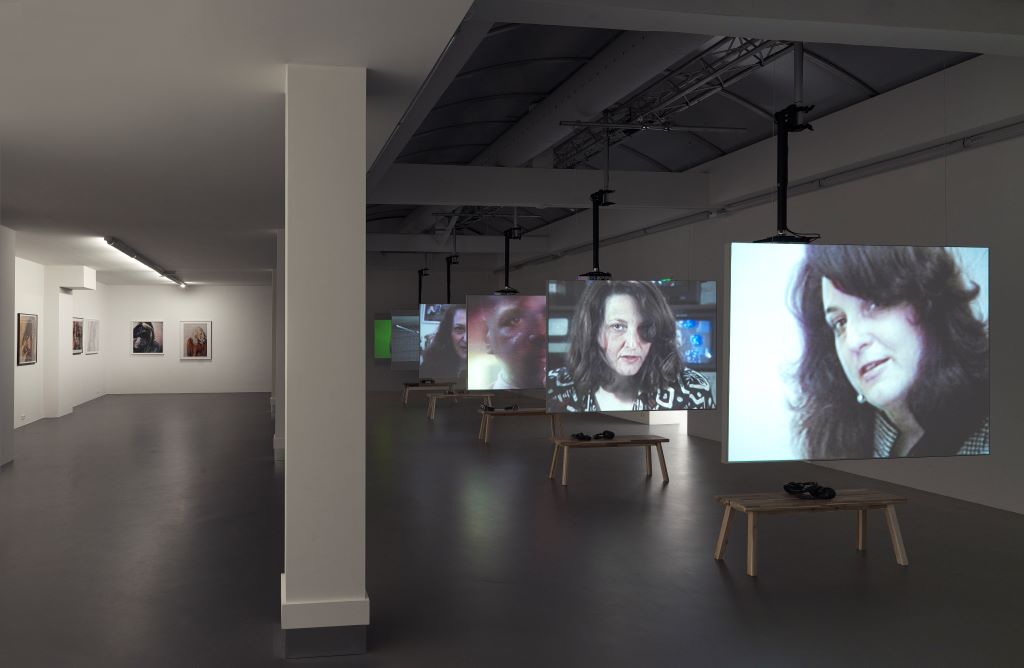
Hershman Leeson is perhaps best known for The Electronic Diaries (1984–2019), which prefigures much of the webcam-based work discussed above. In this series of video diaries spanning more than three decades, Hershman Leeson interrogates the process of creating an identity for an audience, exploring her past through a deeply revealing first-person narration. As the artist’s website notes, Hershman Leeson was an early adopter of the mode of “confessional expression for an unknown audience,” which describes much of today’s Internet-based video. Hershman Leeson recorded herself speaking directly to the video camera, sharing memories and traumas from her life. Diaries resonates especially with Bookchin’s aggregations of emotional YouTube diaries, such as Laid Off (2009), in which individual stories are stitched into a collective narrative of job loss, and My Meds (2009), which combines over 50 vlogs in which people list their medications.
Hershman Leeson has also worked with webcam video, as in her 1990–93 multimedia work Room of One’s Own, which makes use of live surveillance footage to create a tension between the subjective positions of observer and observed. The piece consists of a miniature bedroom outfitted with a surveillance camera system and a miniature monitor screen. Inspired by Edison’s kinetograph, which made use of a peephole to display films, Room of One’s Own tracks the viewer’s eye and responds to movement by projecting different scenes featuring the female occupant of the bedroom. Live video footage of the viewer’s eye itself is displayed on the monitor, effectively redirecting the gaze of the voyeur outwards, as in INBOX FULL—and also literally placing the viewer within the scene, rather like the experience of watching yourself as you watch someone else on a video call. Hershman Leeson comments on the tension between performance and voyeurism with this peephole-webcam; the protagonist of the work does not simply present herself for viewing, but also evades the viewer and makes demands of them through the text shown on the screen.
Paula Albuquerque suggests that we are now all in the presence of a “constant cinematic environment,” in which moving images can be captured and transmitted by virtually anyone, instantaneously, virtually anywhere. Physically attached to the personal computer, usually situated in the bedroom or home office, the webcam of the 1990s and early 2000s can be seen as having opened up a portal between (private) offline space and (public) online communication and performance that has continued to widen, profoundly influencing our present techno-cultural reality. The works discussed here engage creatively with the experience of looking and being looked at through this curious portal—they all take as their subject, ultimately, not the self that is being recorded, but the recording apparatus itself and the emerging relationship to this technology that has taken shape over the past three decades. They document this human-machine interface by getting inside the eye of the webcam and showing us the particular way of seeing that it enables.




